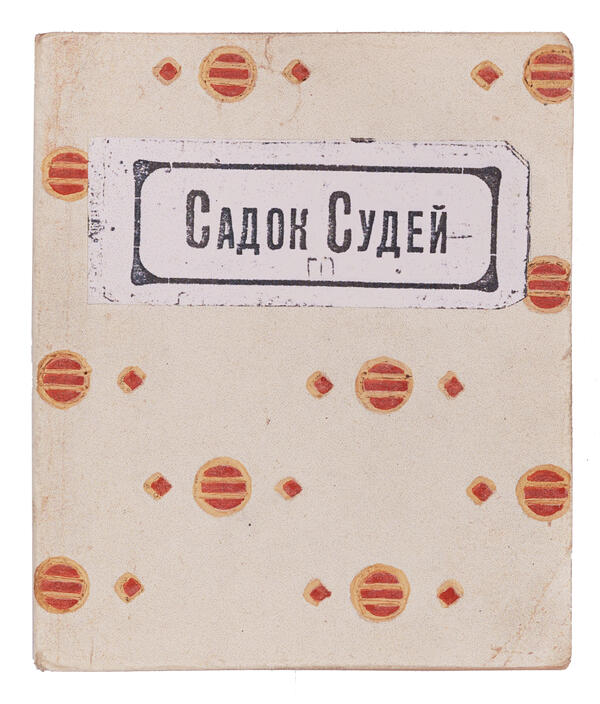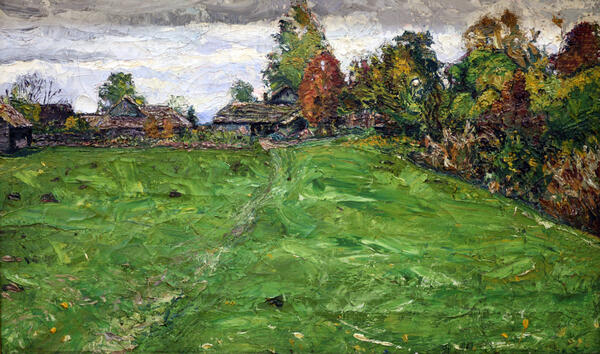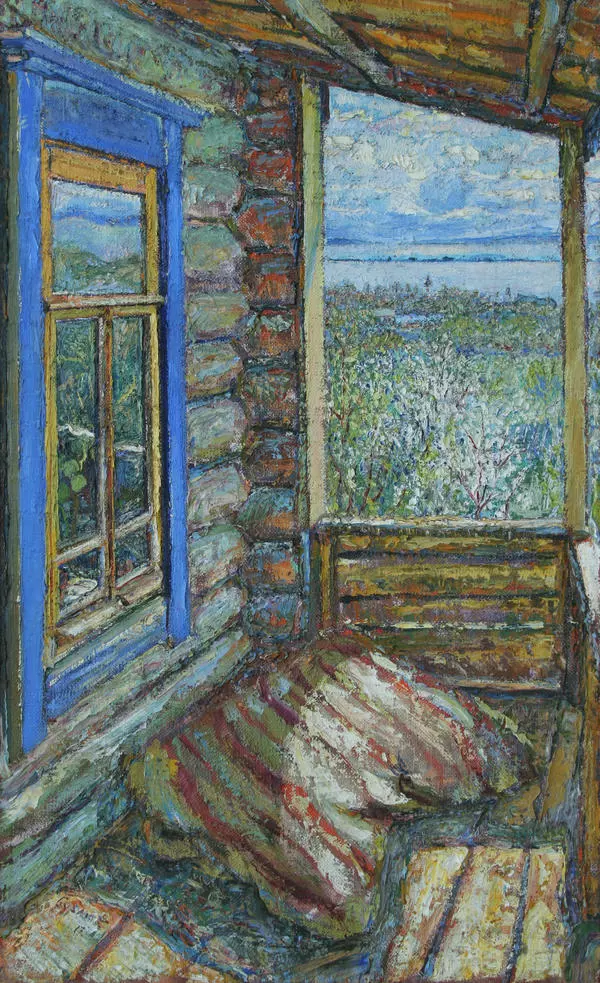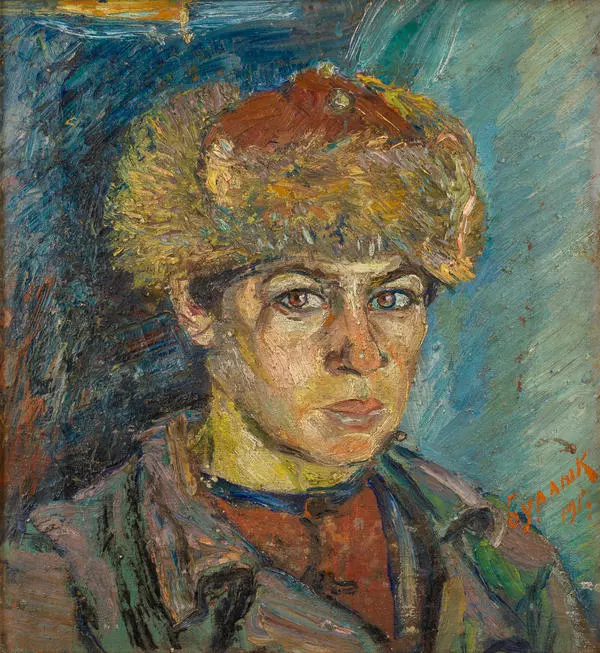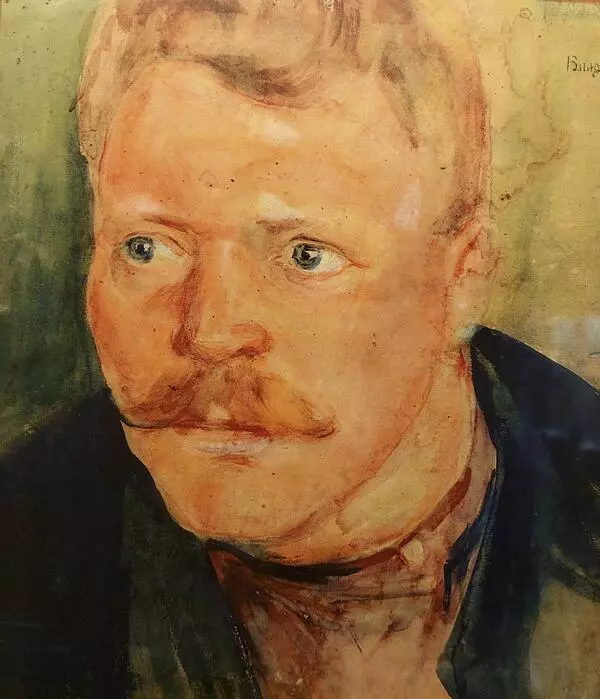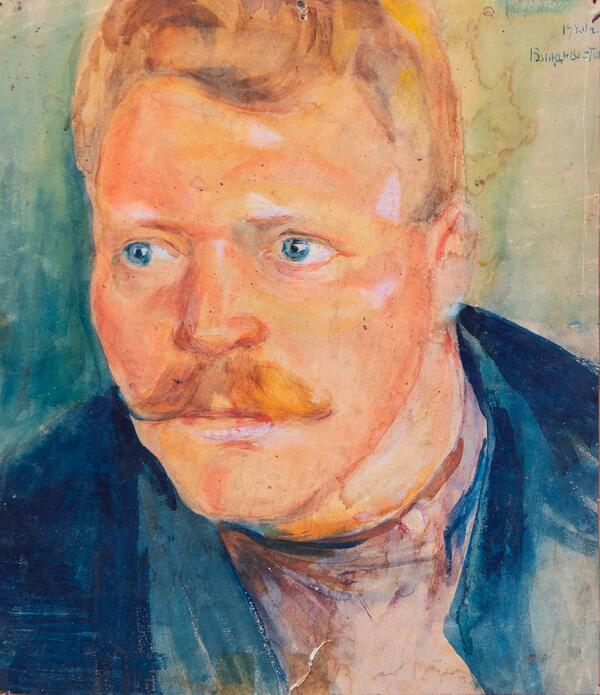David Davidovich Burliuk became a new type of universal artist of the early 20th century. Born in 1882 into a large family of an agronomist, he came from an old dynasty of Cossacks. His father worked as a manager of estates in the south of Russia, so the Burliuks had to move quite often. His mother practiced painting, while the children put on plays at home and often read aloud. As a child, David’s brother Nikolay accidentally gouged David’s left eye out, so he spent his whole life with a glass eye. Subsequently, the artist used his glass eye and a lorgnette to purposefully shock the public and did so quite skillfully.
The Field with Ricks
A new student named Burliuk. Had an insolent look. Had a lorgnette. Wore a suit. Hummed when walking. I began to pick at him. We almost had a fight. He is a wonderful friend. My true teacher. Burliuk made me a poet. Read a lot of French and German works. Gave me books. We walked and talked all the time.
Burliuk was the one to bring Mayakovsky’s poetic talent to light and would later often lend him moral and financial support.
David Burliuk’s art reflected his active nature, rich inner world, and striving for novelty. His works combine different techniques, styles, and genres: Impressionism, Futurism, Fauvism, and Realism. He was reproached for eclecticism and the lack of one recognized manner. However, no matter what style Burliuk worked in, the pronounced pictorial texture was his trademark — in his own words, it was “jagged, conchoidal, hackly, earthy”. He loved to experiment, was one of the first to use collages in his works, and glued in pieces of plywood, gears, and metal plates. Unlike many of his avant-garde colleagues, Burliuk did not break with the plein air impressionist style and realist traditions.
As a painter and poet, he published manifestos and experimental collections, came up with extravagant campaigns, organized exhibitions, and traveled to the Urals, Siberia, and the Far East with lectures on modern art. He moved from the Russian Far East to Japan to paint and study the local culture. In 1920, he emigrated to the USA.



